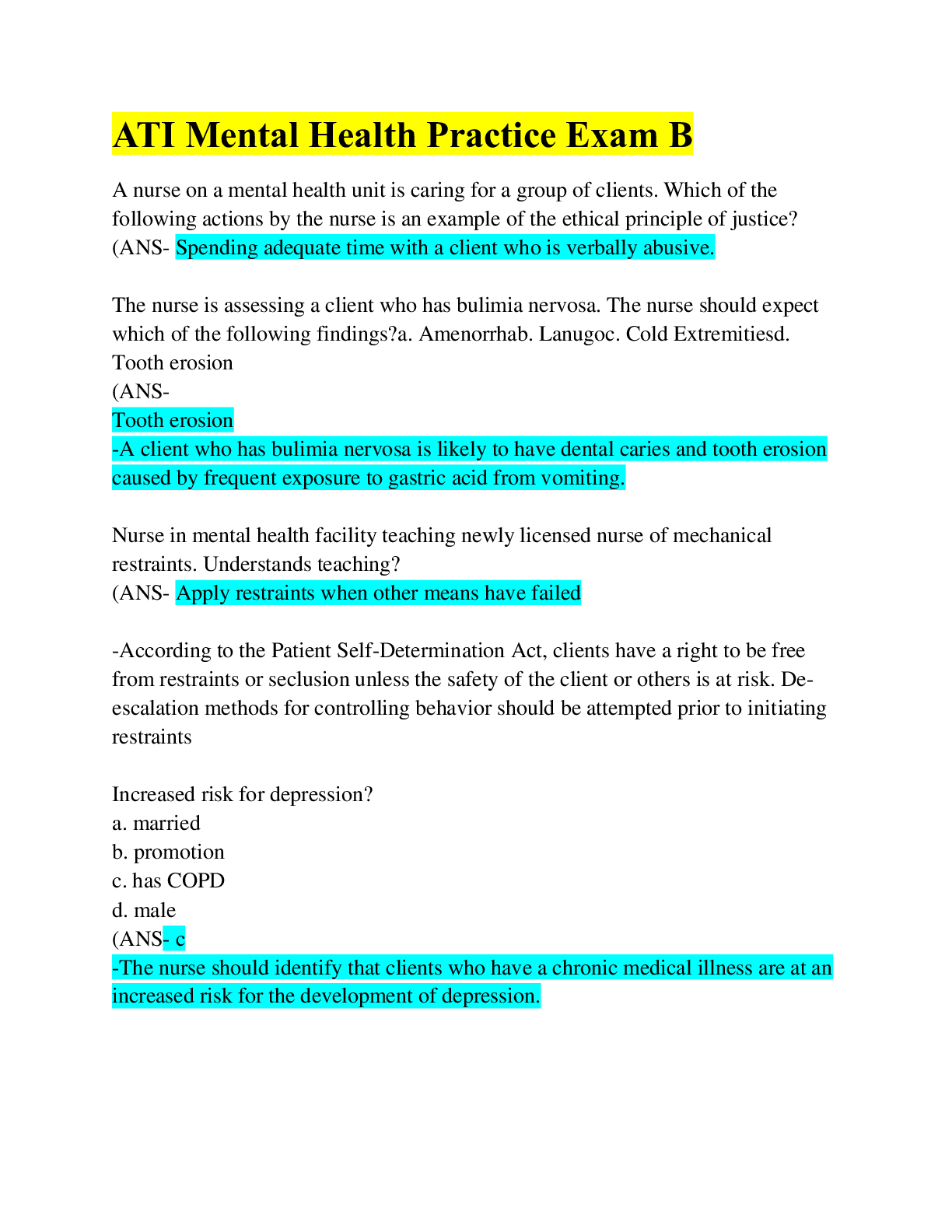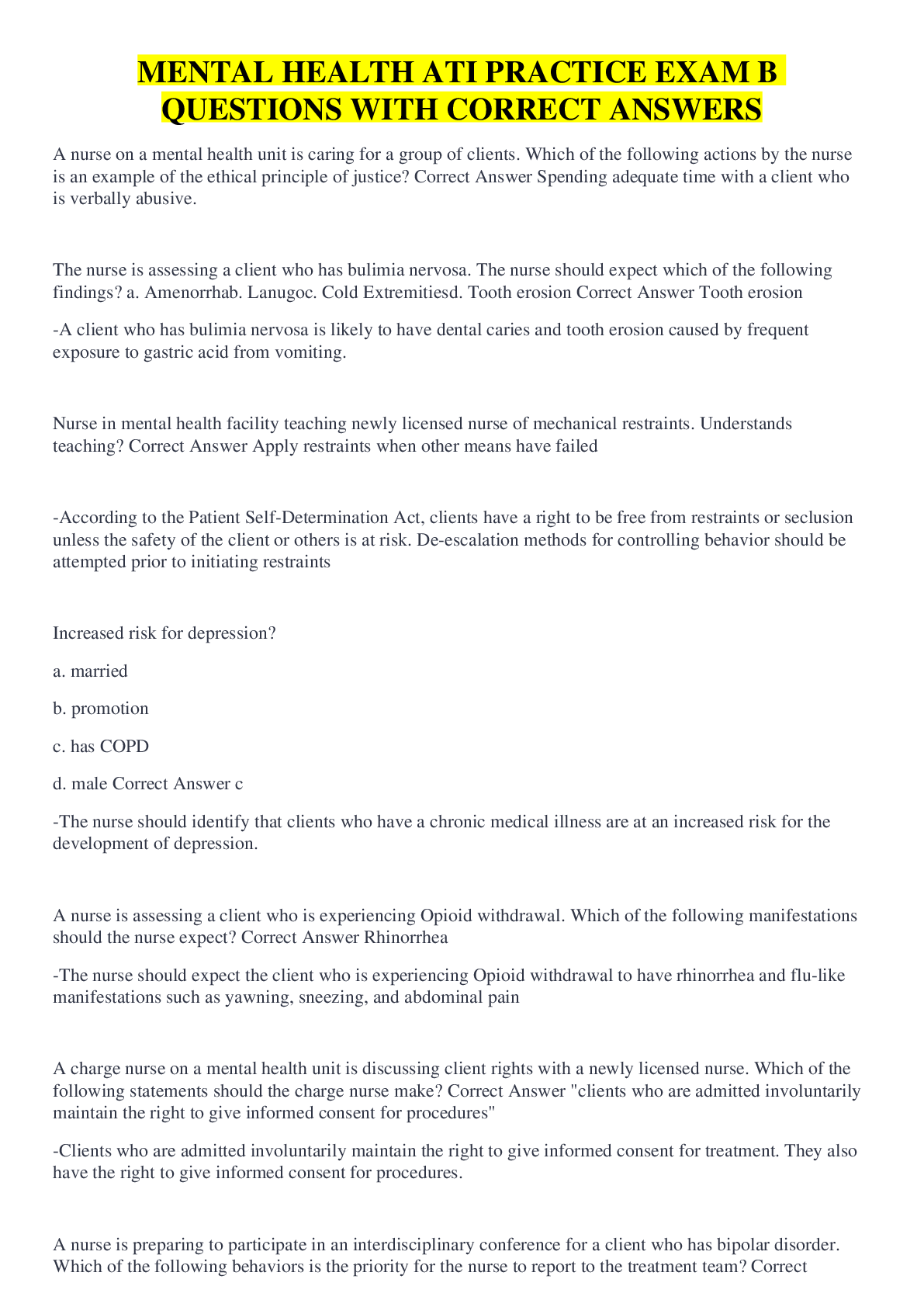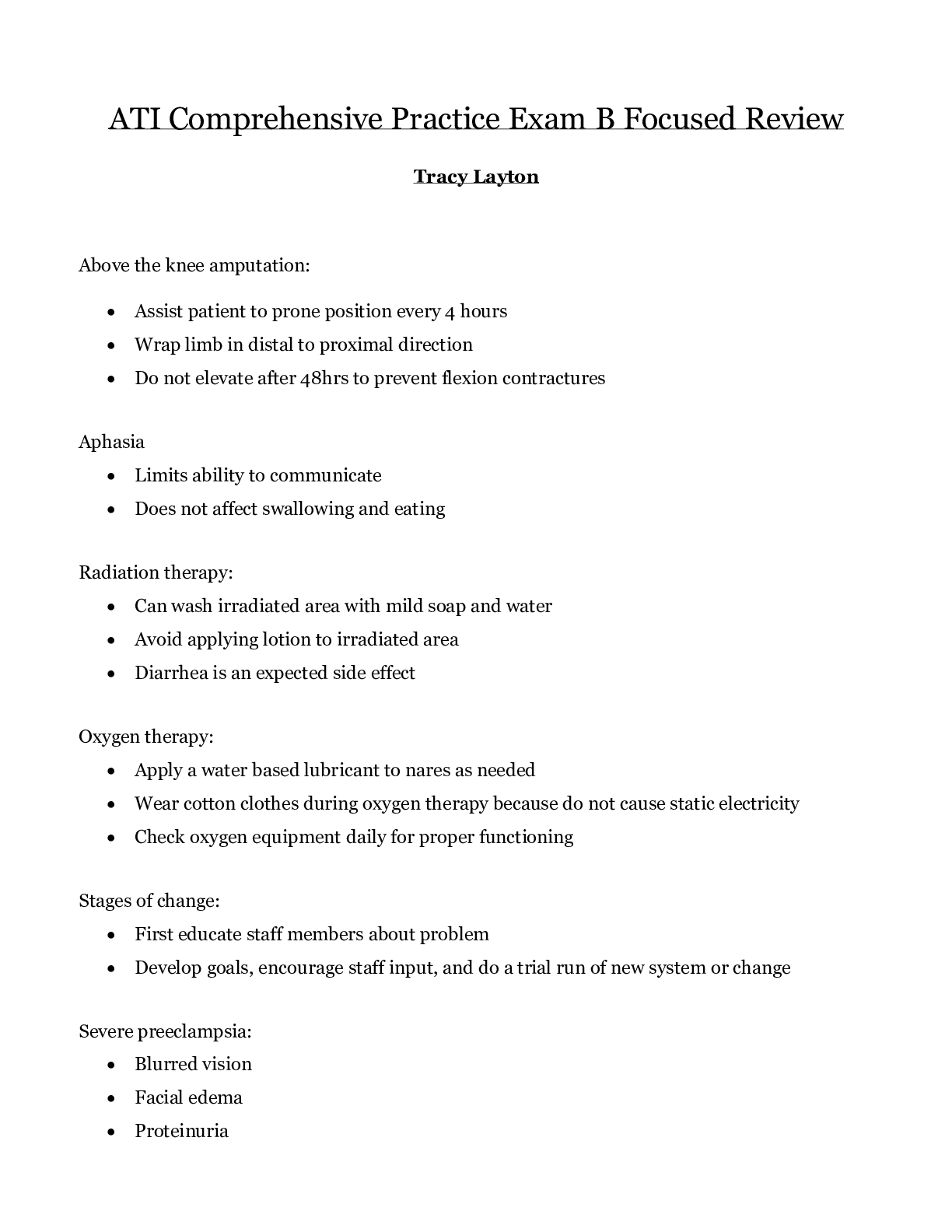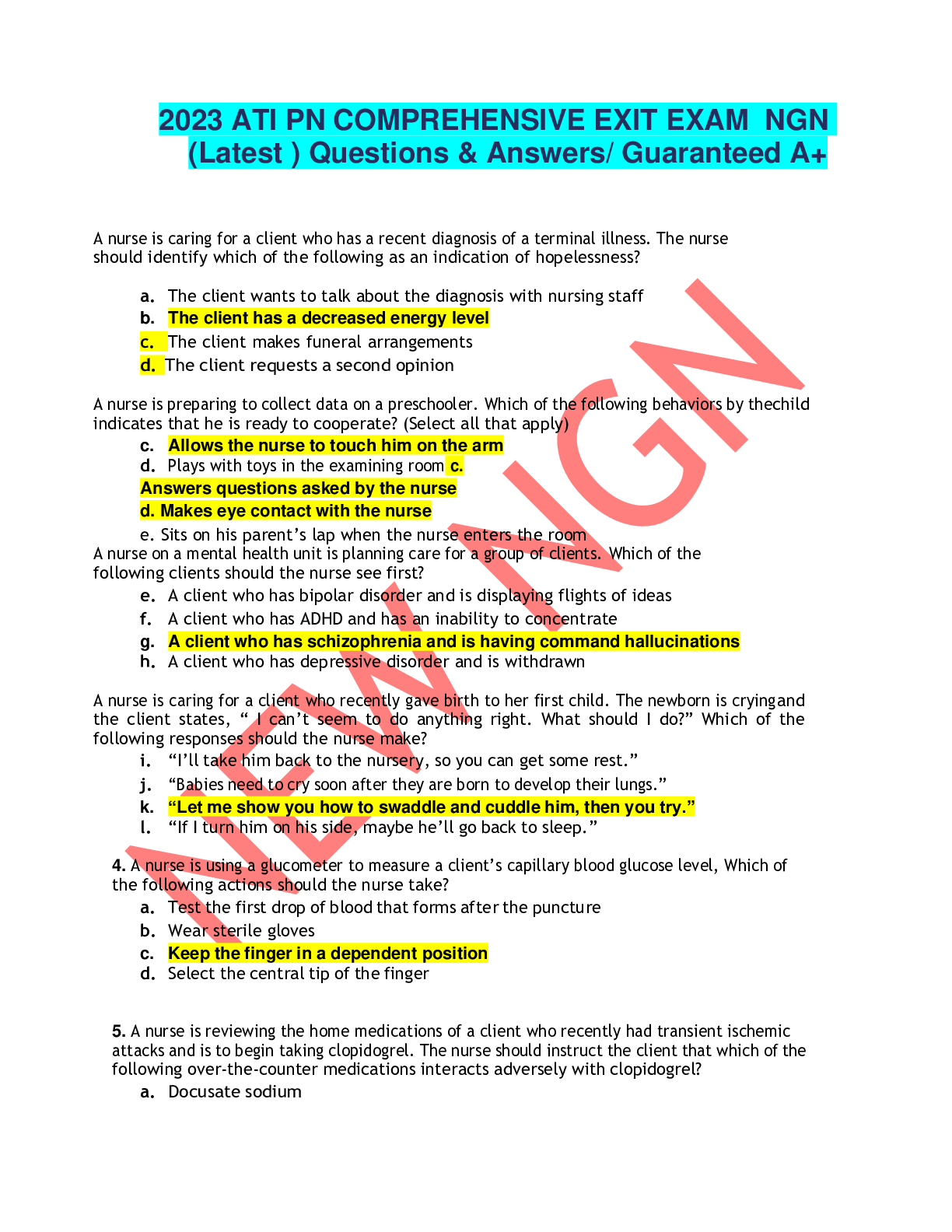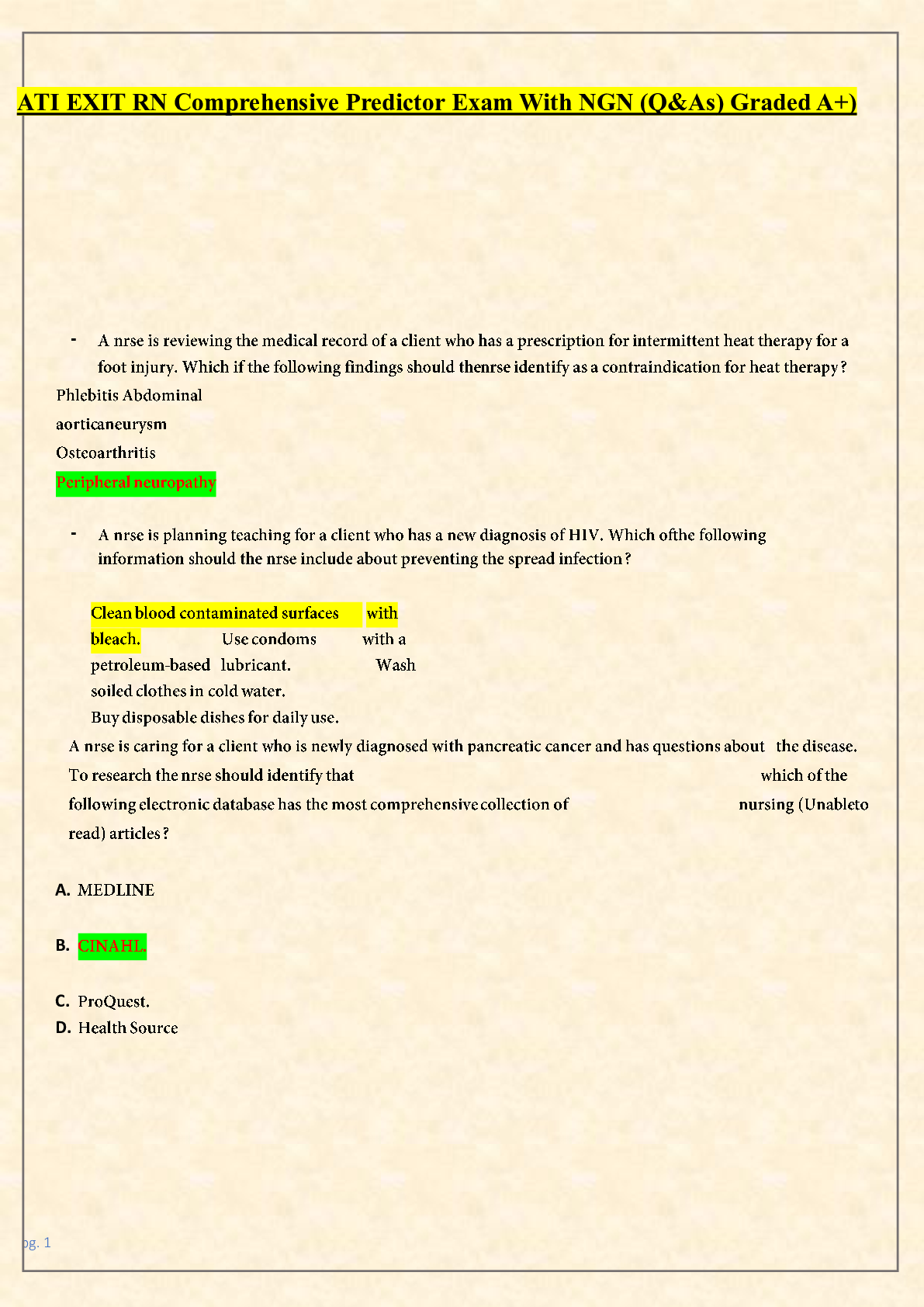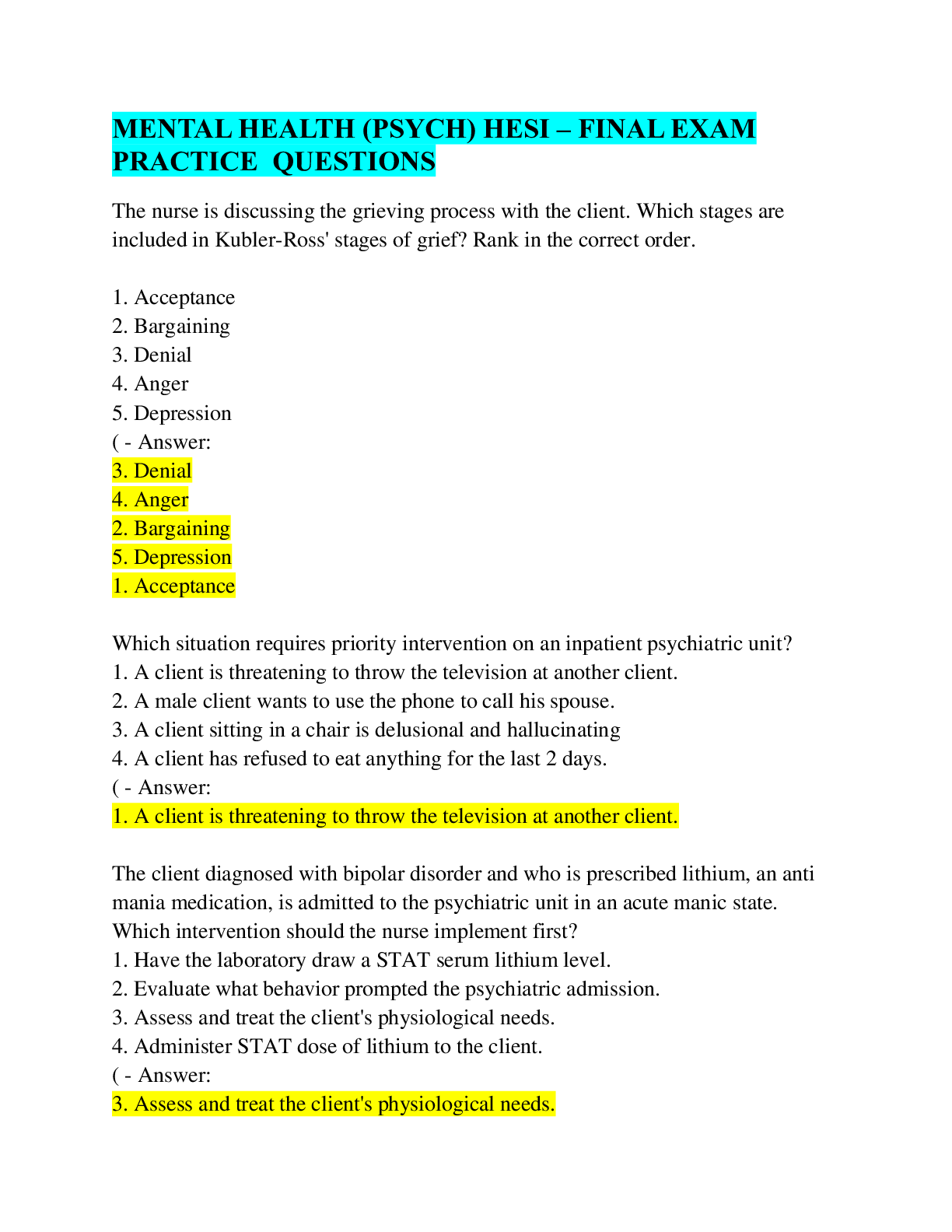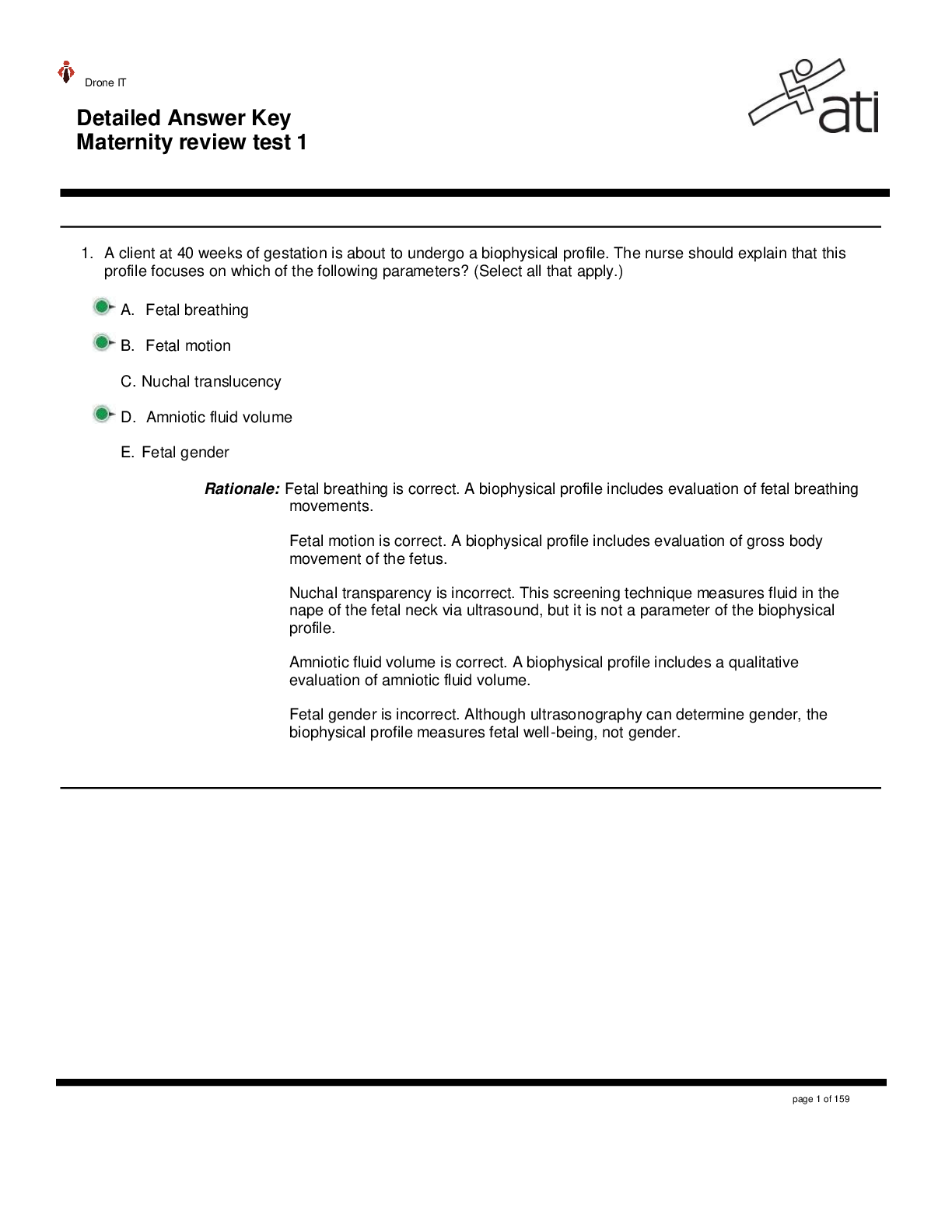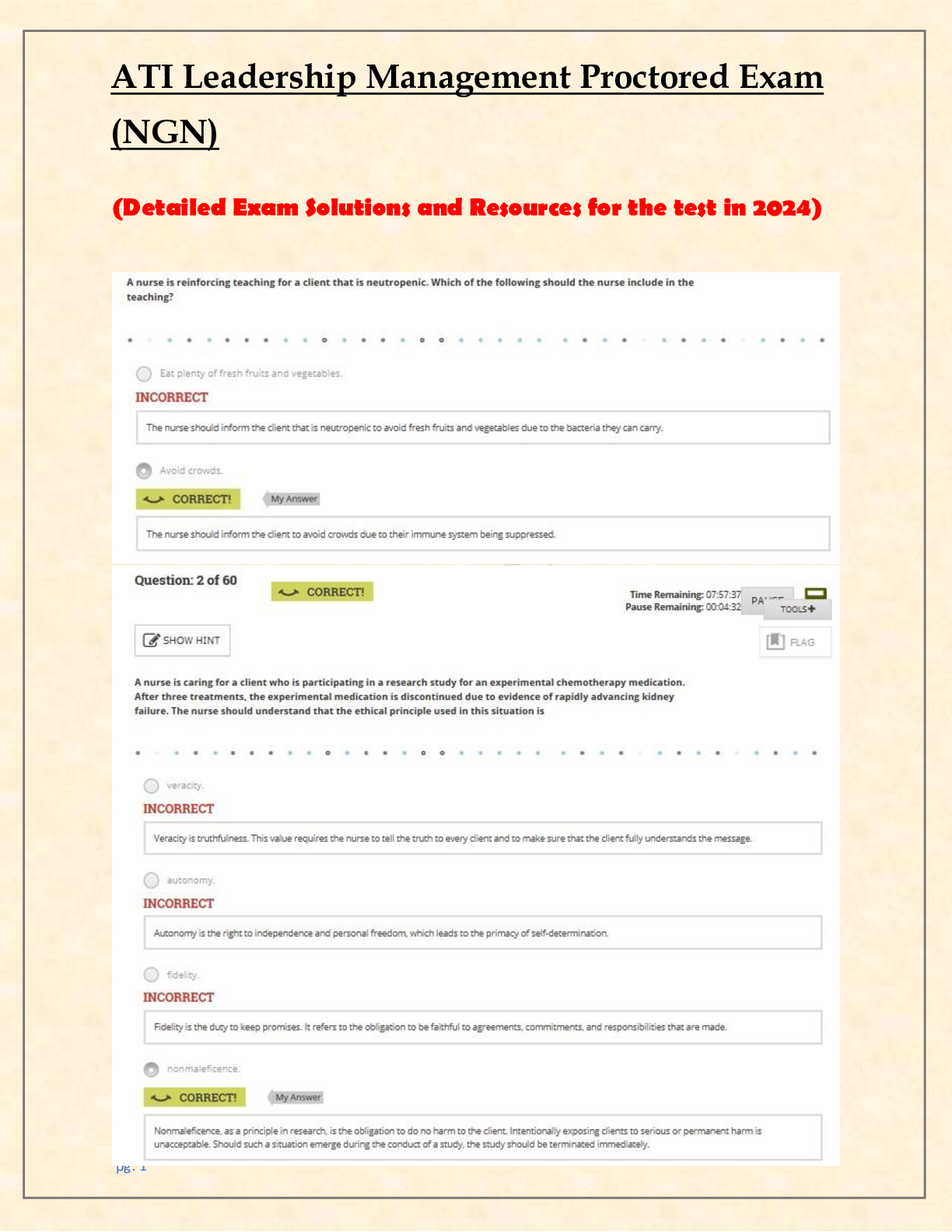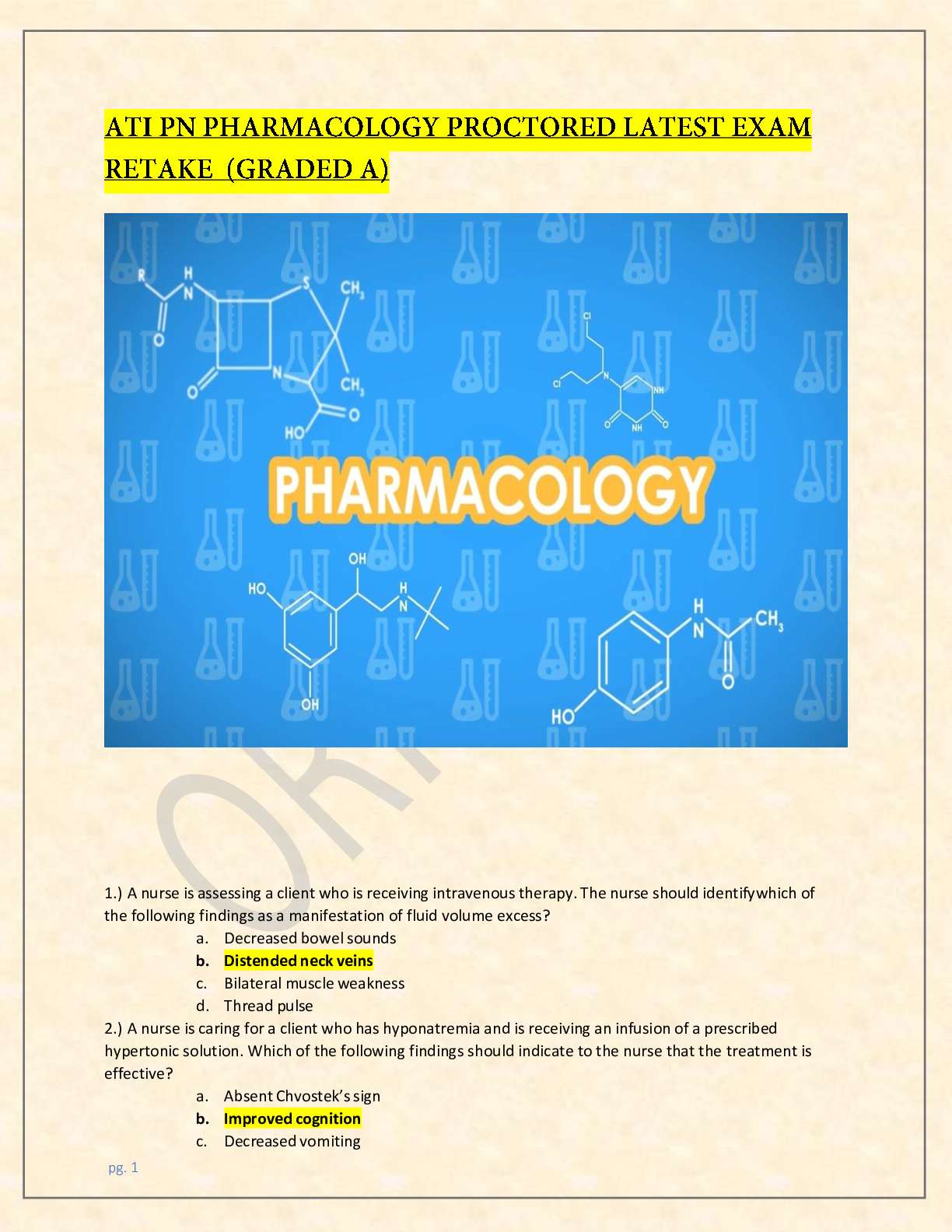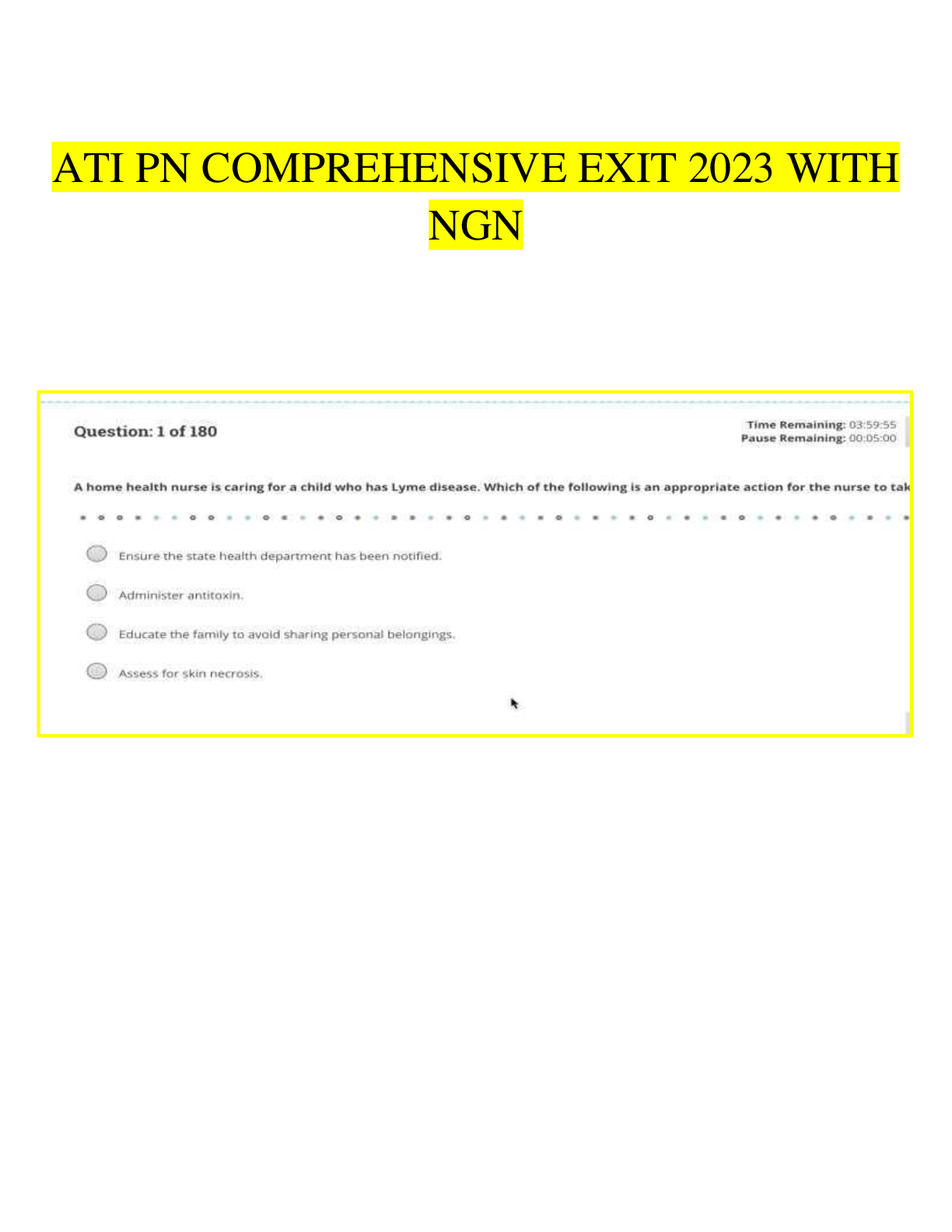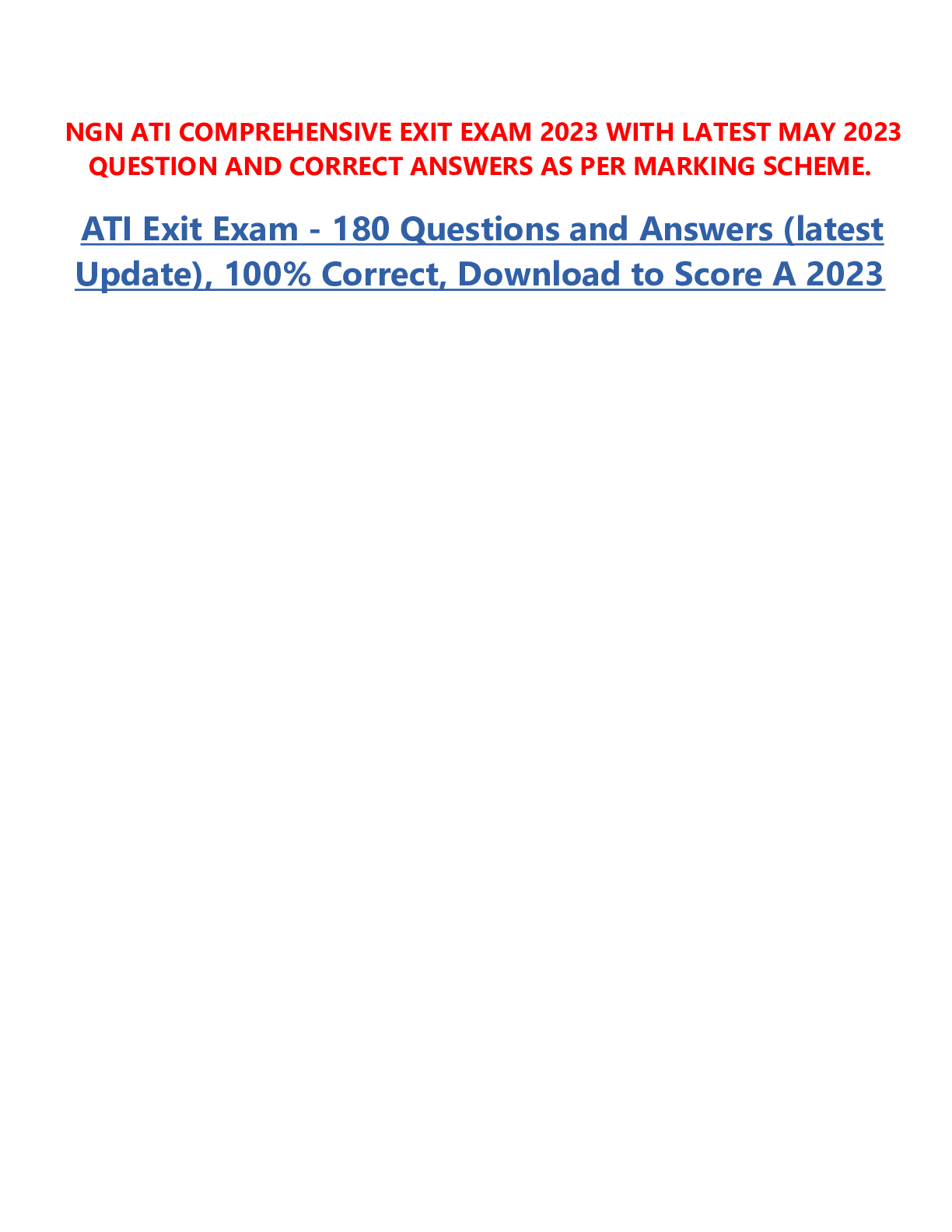*NURSING > ATI > Peds- ATI Practice Exam B Latest Review Questions and answers. Guaranteed Grade A (All)
Peds- ATI Practice Exam B Latest Review Questions and answers. Guaranteed Grade A
Document Content and Description Below
Nurse is reviewing lab results of a school age child 1 week postop following an open fracture repair. Which findings should nurse ID as indication of potential complication? a. Erythrocyte sediment... ation rate 18 mm/hr b. WBC count 6,200/mm3 c. C-reactive protein 1.4 mg/LRBC count 4.7 million/mm3 - a. Erythrocyte sedimentation rate 18 mm/hr - above the expected reference range of up to 10 mm/hr and is an indication of osteomyelitis. Wrong Answers: b. WBC count 6,200/mm3:- within the expected reference range of 5,000 to 10,000/mm3. -An elevated WBC count is an indication of osteomyelitis. c. C-reactive protein 1.4 mg/L:- within the expected reference range of <10.0 mg/L. -An elevated C-reactive protein level is an indication of osteomyelitis.RBC count 4.7 million/mm3:- within the expected reference range of 4.0 to 5.5 million/mm3. A decreased RBC count can indicate hemorrhage. Nurse planning care for school age child with tunneled CVA device. Which interventions should the nurse include in plan? a. Use sterile scissors to remove the dressing from the site. b. Irrigate each lumen weekly with 10 mL of 0.9% sodium chloride solution when not in use c. Access the site using a noncoring angled needle d. Use a semipermeable transparent dressing to cover the site - d. Use a semipermeable transparent dressing to cover the site - The nurse should cover the site with a semipermeable transparent dressing to reduce the risk of infection. Wrong Answers: a. Use sterile scissors to remove the dressing from the site - The nurse should avoid the use of scissors when performing dressing changes because this can result in accidental cutting of the catheter. b. Irrigate each lumen weekly with 10 mL of 0.9% sodium chloride solution when not in use - The nurse should flush each lumen of the catheter with a heparin solution daily when not in use. c. Access the site using a noncoring angled needle - The nurse should use a noncoring angled or straight needle when accessing an implanted port. Nurse is planning care to address nutritional needs for preschooler with cystic fibrosis. Which interventions should the nurse include in plans? a. Administer pancreatic enzymes 2 hr after meals. b. Discontinue the use of pancreatic enzymes if steatorrhea develops. c. Limit fluid intake to 750 mL per day. d. Increase fat content in the child's diet to 40% of total calories. - d. Increase fat content in the child's diet to 40% of total calories - A child who has cystic fibrosis is unable to properly digest fats due to fibrosis of the pancreas and limited secretion of pancreatic enzymes. The nurse should increase the child's fat intake to 35% to 40% of total caloric intake. Wrong Answers: a. Administer pancreatic enzymes 2 hr after meals - The nurse should plan to administer pancreatic enzymes within 30 min of meals and snacks to replace the enzymes lost with cystic fibrosis. b. Discontinue the use of pancreatic enzymes if steatorrhea develops - A child who has cystic fibrosis and develops steatorrhea, or fatty stools, might need to have their dosage of pancreatic enzyme increased by their provider until the steatorrhea resolves. c. Limit fluid intake to 750 mL per day - The nurse should encourage fluid intake, rather than restrict it, to prevent dehydration caused by the loss of sodium and chloride through perspiration. Nurse in ED auscultates lungs of adolescent experiencing dyspnea. Nurse should ID sound as what? a. Wheezes b. Crackles c. Pleural friction rub d. Rhonchi - a. Wheezes - high-pitched, musical or whistling-like sounds heard primarily on expiration as air passes through and vibrates narrowed airways. Wrong answers: b. Crackles - high-pitched, short, and noncontinuous sounds usually heard at the end of inspiration. Crackles occur when air expands deflated alveoli or when the passage of air through small airways is disrupted. c. Pleural friction rub - a loud, rough, grating sound that can be heard during inspiration or expiration. A pleural friction rub occurs when the pleurae are inflamed and the surfaces rub together. d. Rhonchi - low-pitched, continuous sounds that have a snore-like quality and are usually louder during expiration. Rhonchi occur when the larger airways are obstructed. Nurse assesses school age child with infratentorial brain tumor. Which findings should the nurse ID as manifestation of IICP? a. Hypotension b. Reports insomnia c. Difficulty concentrating d. Tachycardia - c. Difficulty concentrating - The nurse should identify that irritability [Show More]
Last updated: 10 months ago
Preview 1 out of 29 pages
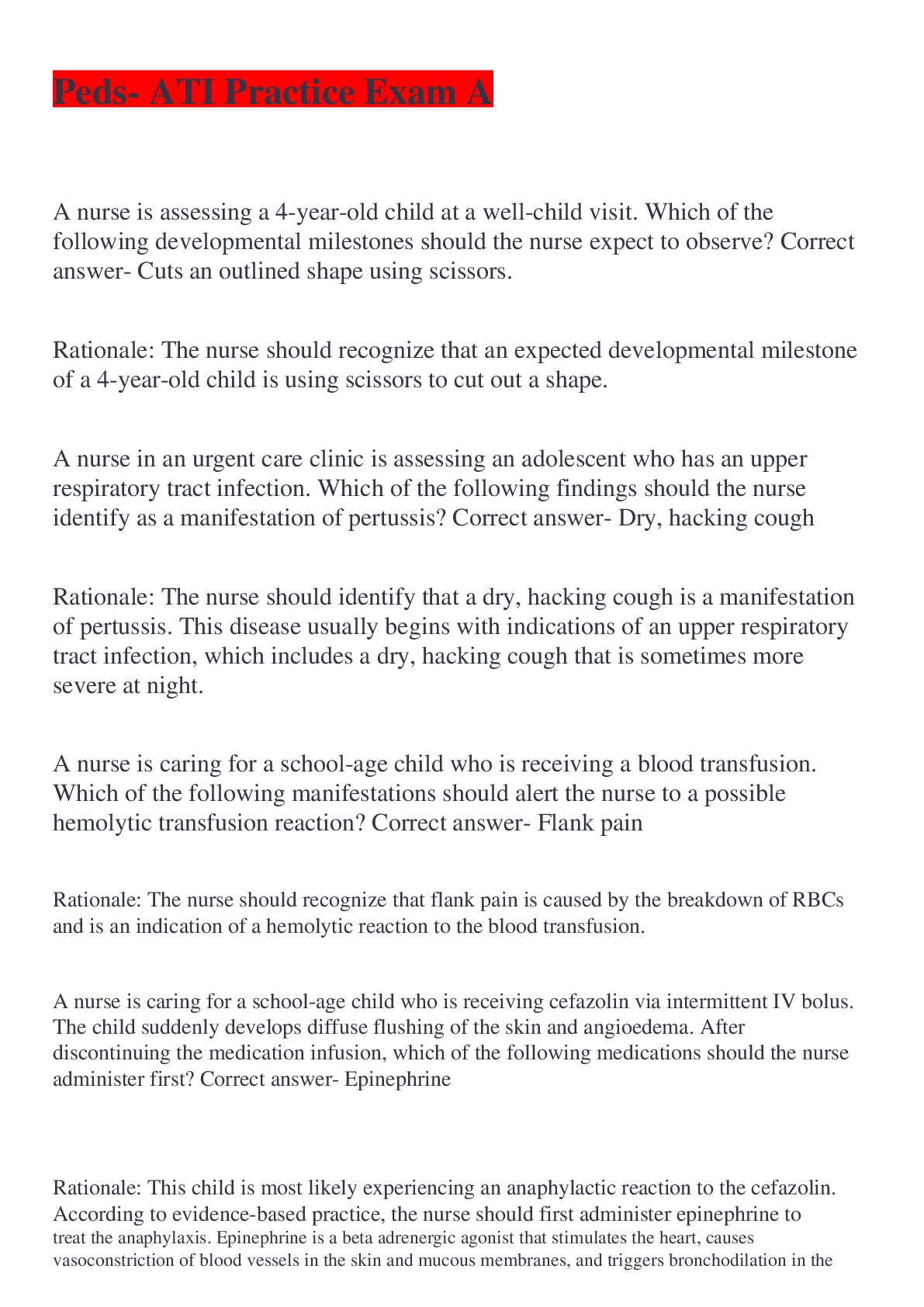
Also available in bundle (2)

ATI pharmacology, med surg, nutrition, fundamentals, mental health, teas; exams compilations. 102 different versions.
This bundle is a library of the aforementioned exam materials. The compilation contains questions with accurate answers. highly rated documents. download to score A+. 100% approved pass rate. deeply...
By bundleHub Solution guider 2 years ago
$55
143

ATI pediatrics practice exams and questions, 21 versions. Latest highly rated documents.
The bundle is a compilation of 21 different versions of ATI pediatrics review exams and answers. well detailed, comprehensible questions and concise answers. rationales provided and answers hyphenated...
By bundleHub Solution guider 2 years ago
$60
19
Reviews( 0 )
Document information
Connected school, study & course
About the document
Uploaded On
Feb 04, 2022
Number of pages
29
Written in
Additional information
This document has been written for:
Uploaded
Feb 04, 2022
Downloads
0
Views
65

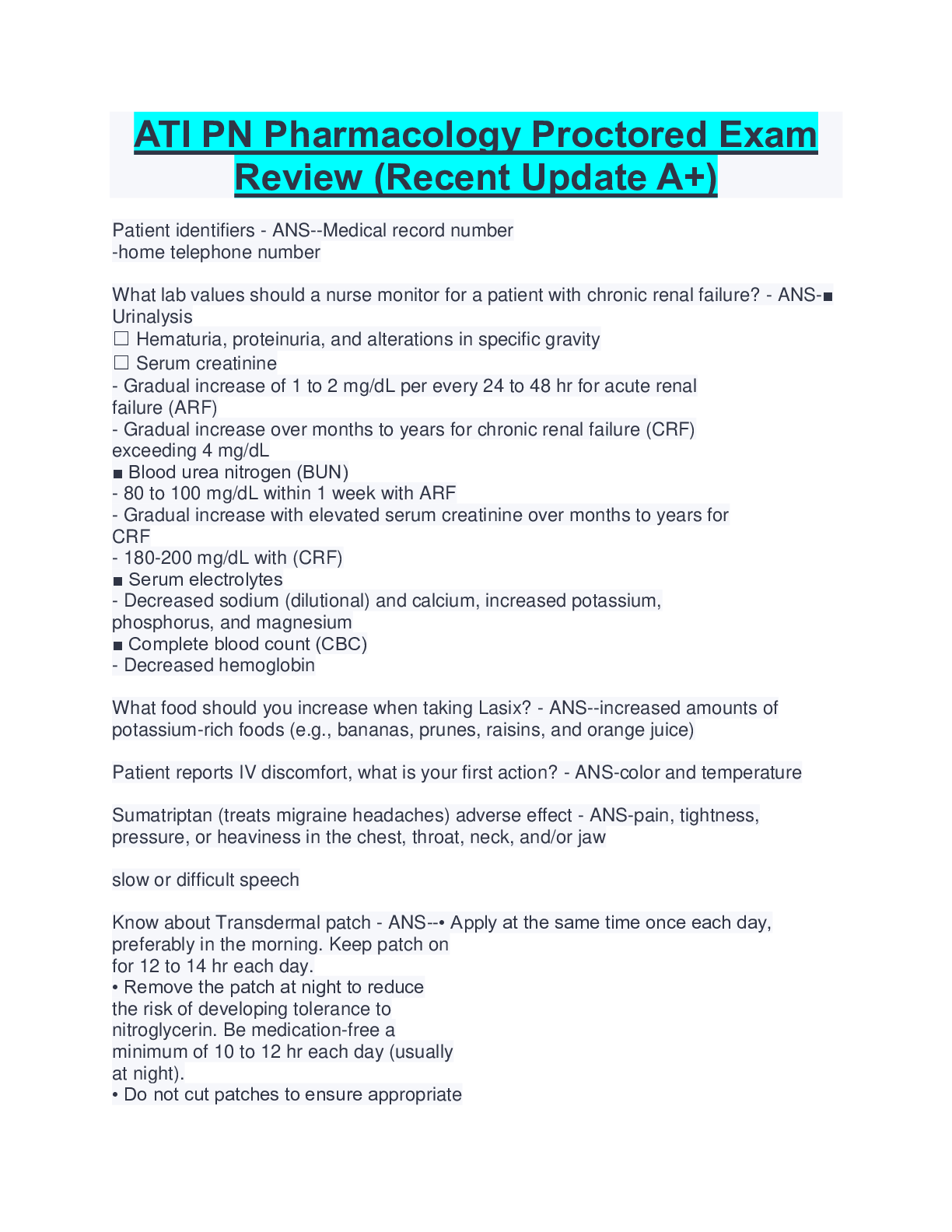



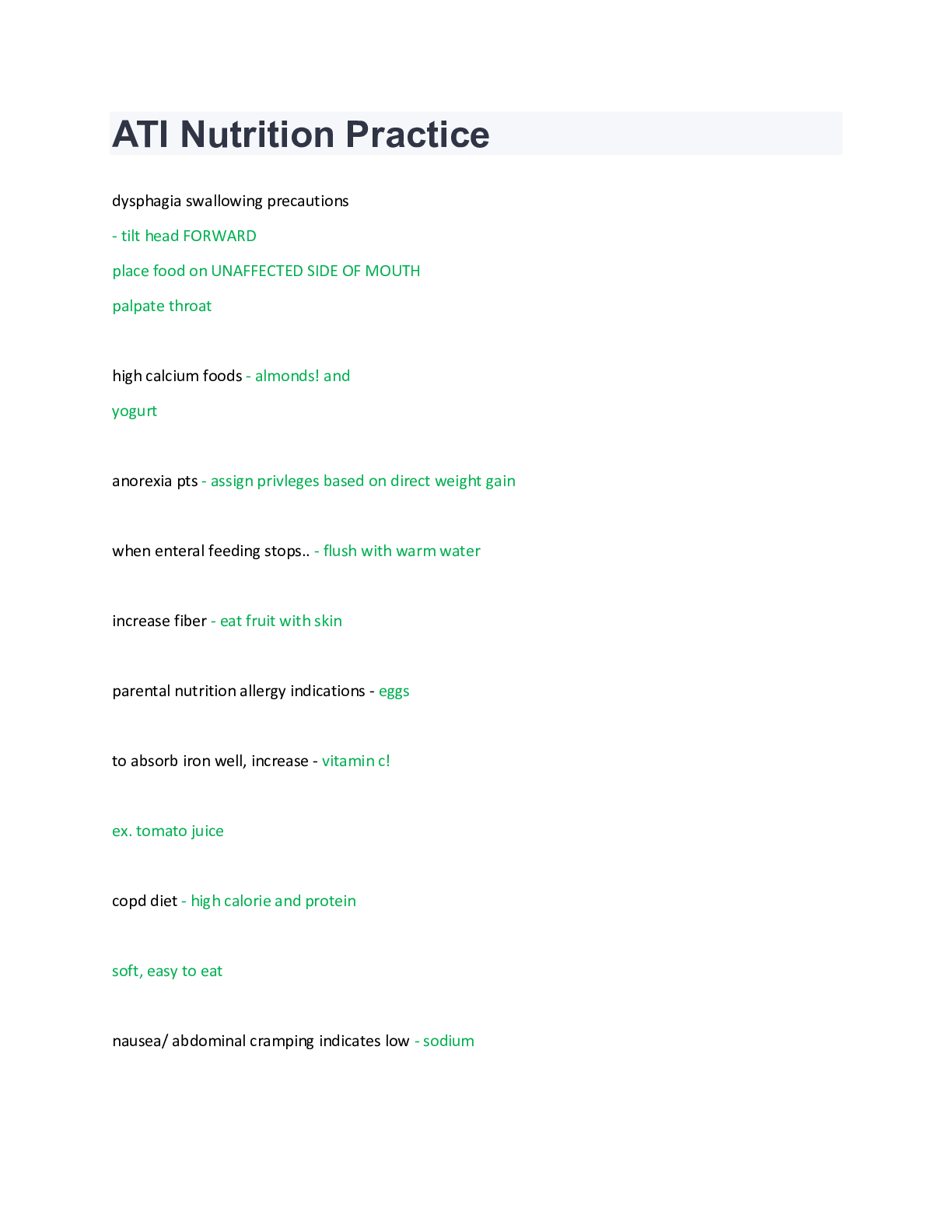
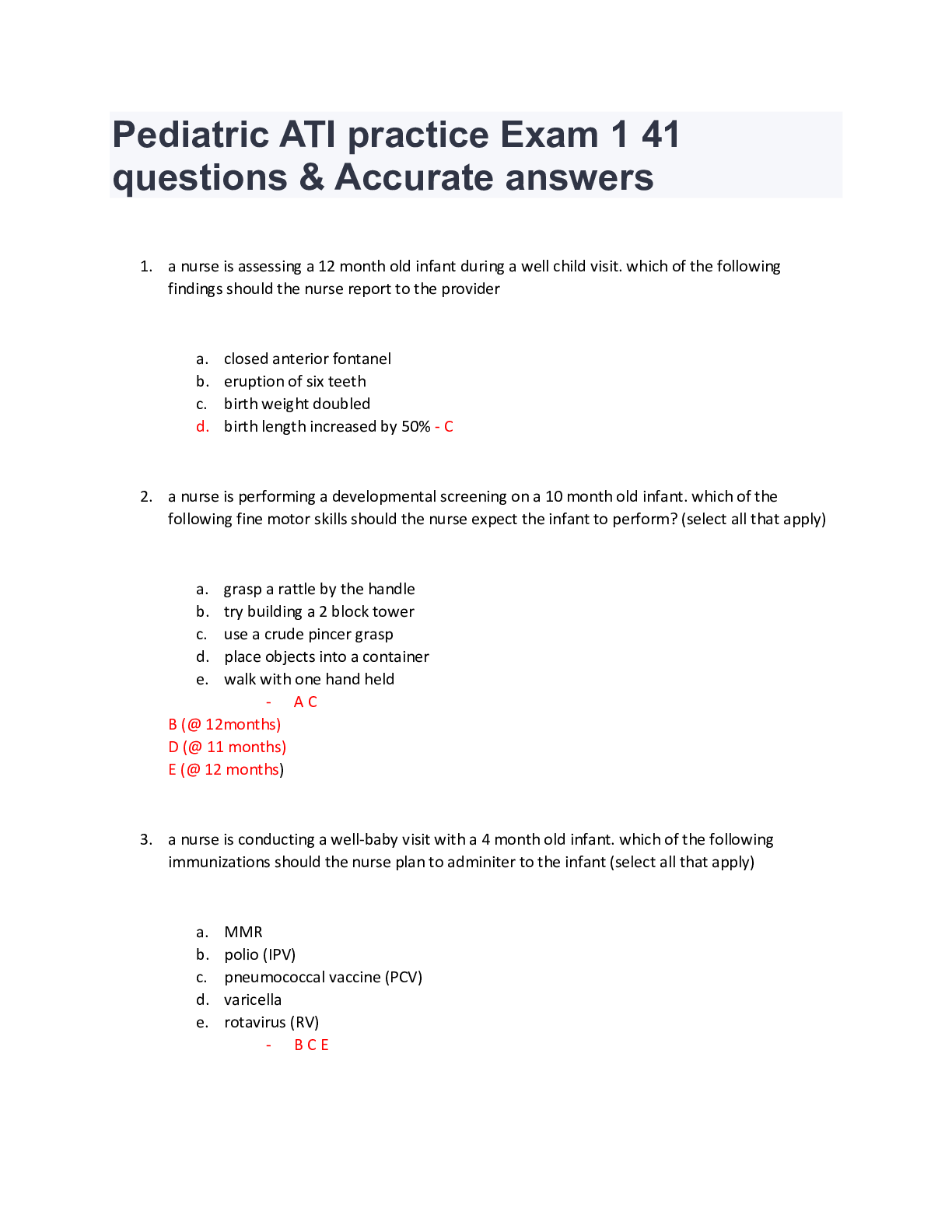

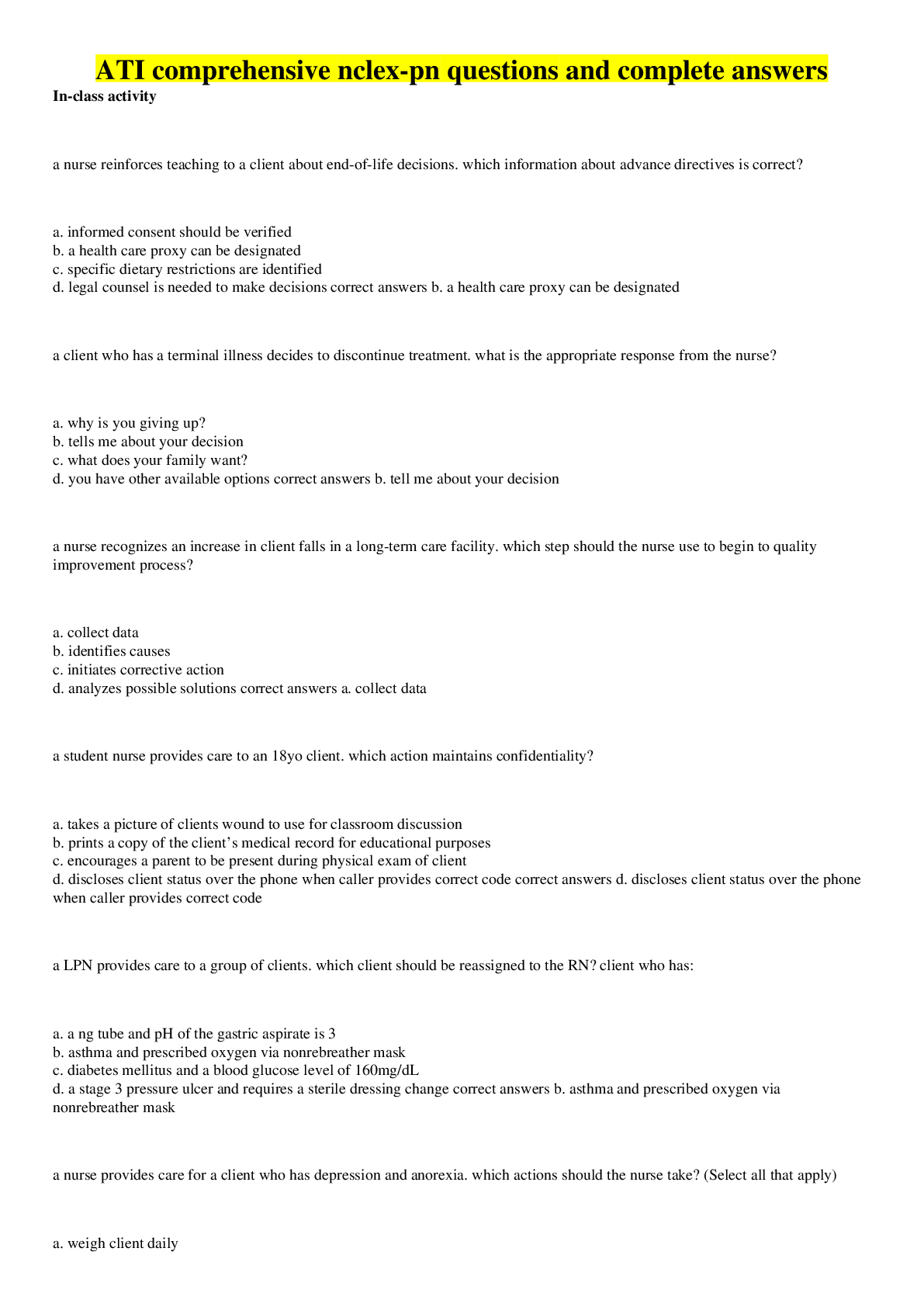






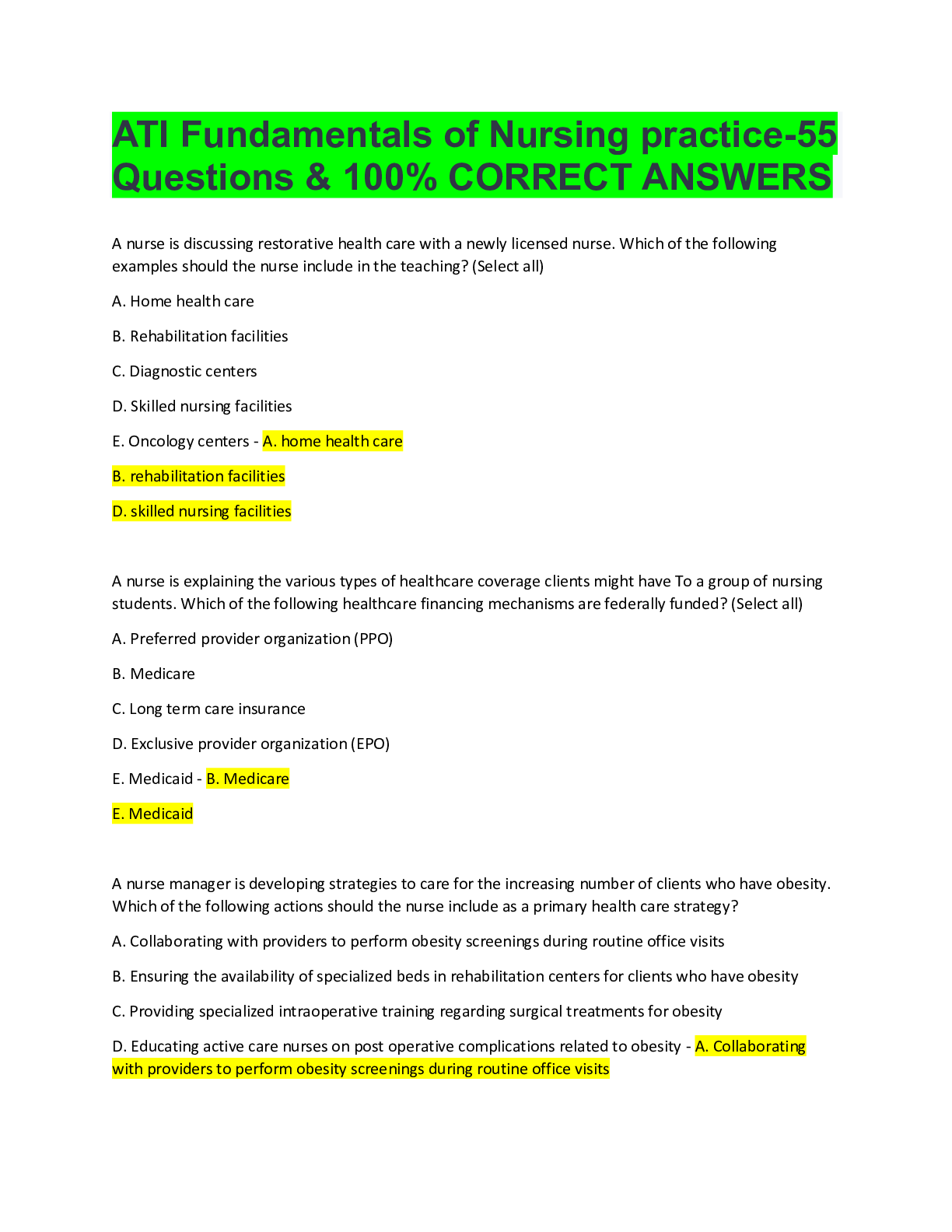
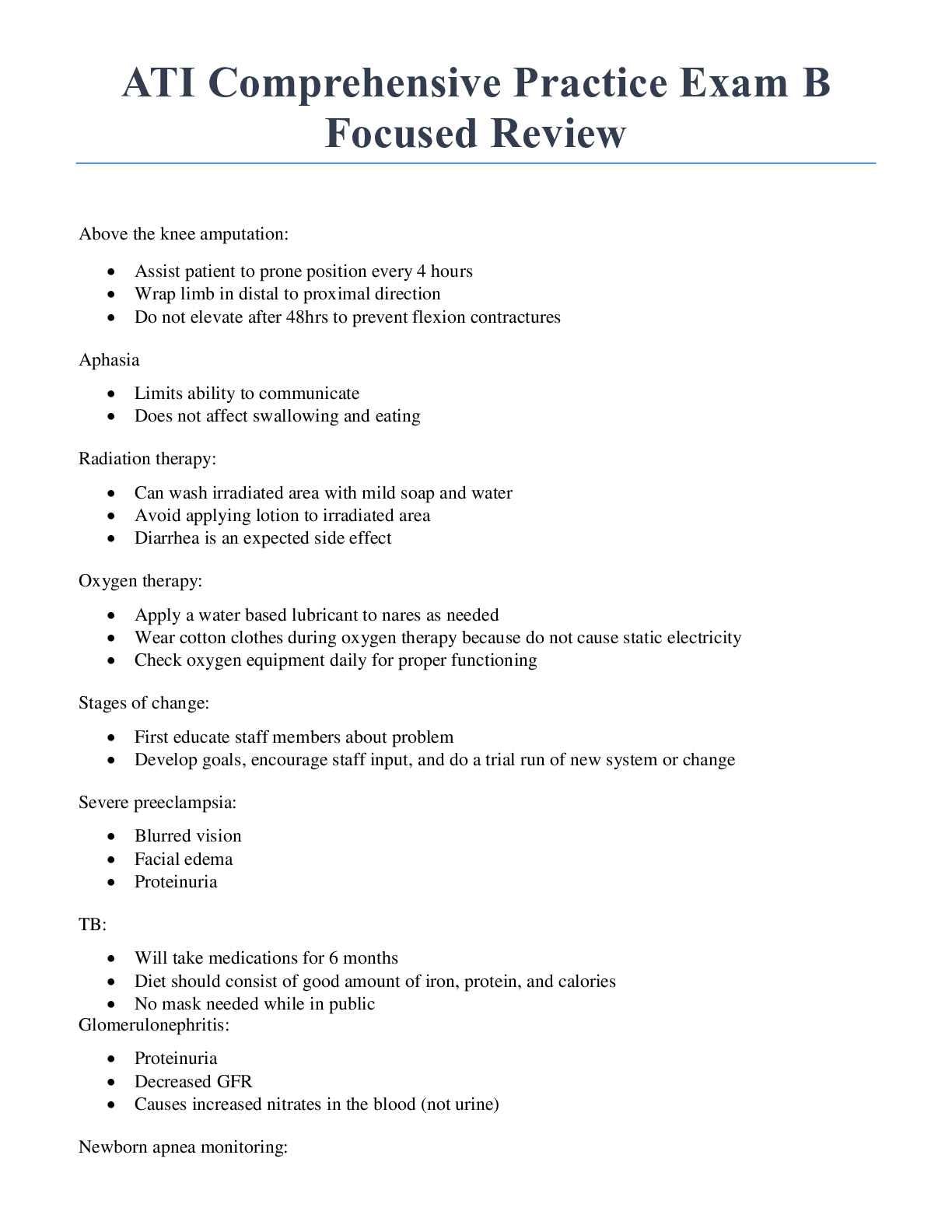
.png)
.png)
